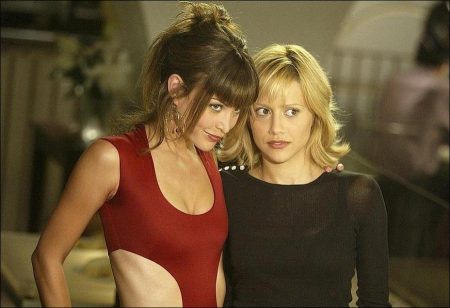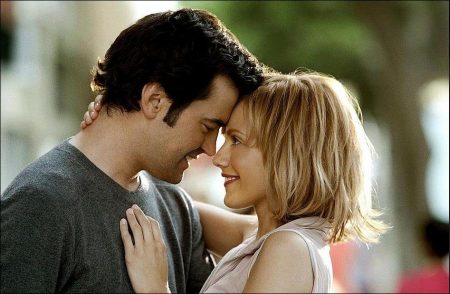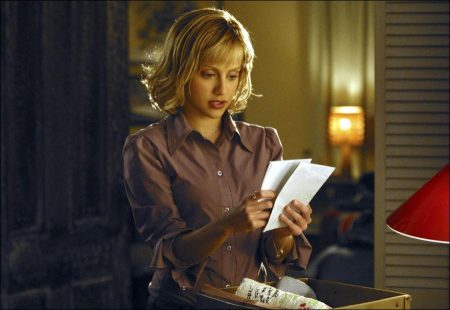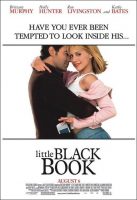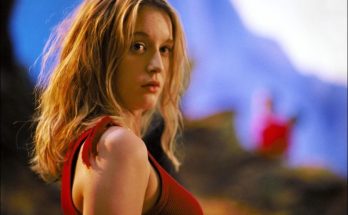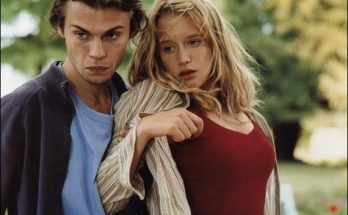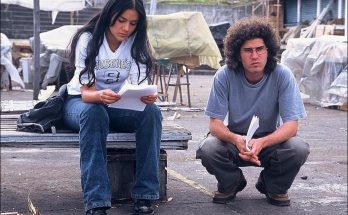Little Black Book Movie Trailer. Says Shuman: “Elaine brought the movie to where it is today.” “I’m attracted to movies with flawed heroes, and what Melissa Carter beautifully outlined in her script was a story about a real character who you do love, but who is compelled to go in the wrong direction,” notes Goldsmith-Thomas.
“I knew that if we could layer this story with real people who are both heroic and flawed, it would be that much more compelling. Audiences are used to rooting for the innocent heroine against a guilty villain. However in this movie every character, either by action or by omission, is a bit guilty. We brought in Elisa Bell in hopes of making the story that much more layered, and we continued to do a great deal of work on it throughout the process.”
Goldsmith-Thomas played a major role in the script’s development. “The thing Elaine has that is so amazing is her ability to convey the idea of real people,” says Sherak. “When you watch the movies she’s produced, you’re always watching real people living their lives. You’re getting a glimpse into the characters’ lives and what they do every day. She makes them compelling to watch.”
Shuman concurs. “That was the goal from the beginning,” he says. “The story had to be real. Nothing on Stacy’s journey should make you think, ‘That couldn’t happen.’ It all had to stem from a place people could identify with.”
The project picked up further steam when actress Brittany Murphy was added to the mix. The star of such films as Uptown Girls, 8 Mile and Riding in Cars with Boys, she was the first and only choice for the role of Stacy.
“Deb (producer Deborah Schindler) and I were at my house reviewing lists of potential actors, and my niece happened to be there. When we mentioned Brittany Murphy, her face lit up,” recalls Goldsmith-Thomas. “Both Deb and I had been great admirers of Murphy’s work and her range. She is quite adept at comedy and drama, and she has this very real vulnerability, which is the perfect embodiment of our lead character.”
Murphy, who had read an early draft of the script, showers equal praise on Goldsmith-Thomas. “Three days after our first conversation, Elaine sent me a revised script,” remembers Murphy. “And in reading the new draft I realized she’d studied my rhythm and speech patterns from our first meeting.”
Murphy fell in love with Goldsmith-Thomas’ approach to the story. “I really adored the concept of the film,” she says. “I was overwhelmingly impressed by not only how thematically relevant the script is, but how fresh, witty and real this modernday romantic comedy is.”
“As a story, I see it as an ensemble piece about a lot of people who are all harboring their own little secrets while, in their work on the Kippie Kann Show, they expose other people’s lives,” Murphy adds. “That got me excited.” Murphy welcomed Goldsmith-Thomas’ generosity. “Elaine accorded me a lot of respect in allowing me to be part of the entire process,” says Murphy. “She was very receptive to my ideas.”
With the script coming together, the focus now turned to the search for a director. British-born Nick Hurran had directed the British film Plots with a View starring Brenda Blethyn, as well as a number of British television shows.
“We went through the process of looking for a director with a unique, fresh voice,” explains Shuman, “and realized there are a lot of amazing people out there. Then we got a call from Nick’s agent. We knew his work and loved it.”
“Deb, Rachel (executive producer Rachel Horovitz) and I watched a tape of Hurran’s Plots With A View,” recalls Goldsmith-Thomas. “What most impressed us was that there was a life on the edge of the screen. You really believed that this wasn’t just happening, but that the camera happened to catch it. I remember screaming and saying ‘Oh, my God, can we get him?!’ Luckily for us, Nick had flown himself in.”
For Hurran, the key attraction to the material was the overarching idea of “biting betrayal,” says the director. “The characters all have something to face in themselves that they’re not quite facing. That mixed with the wonderful humor of the script made it a joy to read.”
Indeed, it is a very modern form of technology — the Palm — that gets Stacy into her complex predicament. “Stacy is kind of prodded by her work colleagues to use the technology with Derek,” says Hurran. “The Palm is the modern equivalent of the little black book or diary. It’s dangerous to leave around if you have something to hide — as Derek soon discovers.”
Despite its contemporary themes, the film has the feel of a classic comedy. “While it’s contemporary, it has that romantic feel of Hollywood’s golden era, and I wanted the audience to look at it and think, ‘This has the same timeless appeal as a Doris Day/Rock Hudson movie.’”
Hurran and his fellow filmmakers set out to cast the film’s other key roles, which included dozens of speaking parts and a wide range of characters. Ultimately, the movie was populated with a blend of up-and-comers, well-known Oscar winners and veteran stage actors.
Though Murphy relates to Stacy on a number of levels, she confesses, “I’ve never done anything like this character does. Snooping is just not in my bag of tricks. It just wouldn’t feel right. Plus, I’m not technologically sophisticated enough to pull it off,” she laughs.
For the character of Barb, the grand puppet master of the “Kippie Kann Show” control room, the filmmakers were searching for the ideal foil for Stacy and found her in one of today’s finest actresses. A four-time Academy Award nominee and Oscar winner for The Piano, Holly Hunter accepted the role of the woman who used to work on Wall Street, then drove a bus and now works in television.
“This script is interesting because the characters continually reveal themselves. They continue to develop throughout,” she says. “Often in Hollywood scripts, the characters are too simplistically drawn. By page 60, you know exactly who they are. Nobody changes much after that. But in this movie, they’re all constantly revealing themselves in new ways to the audience, until the very last moment.”
Hunter describes Barb’s duplicitous nature as less good-versus-evil and more “creator-destroyer. She inhabits both actions. In some ways Barb is just curious and wants to help. And then other, darker motives occur to her.”
Stacy is largely unaware of Barb’s machinations, says Murphy. “She sees her as a comrade. But all along, Barb is pulling strings and doing it brilliantly.”
Barb is also very adaptable, according to Hunter. “That’s one of the reasons why I wanted to play Barb. She loves to discover, and we get to see her do a lot of that in this movie,” says Hunter.
Barb also serves as the impetus for Stacy’s self-discovery. “Stacy’s been willing to believe instead of understand,” continues Hunter. “That was one of the reasons why I was attracted to this script — do you believe or do you know? It takes slightly less work to believe in what you’re doing than to really understand it. Barb really forces this conflict in Stacy. She forces her to reckon with the people she’s chosen to have in her life.”
Little Black Book (2004)
Directed by: Nick Hurran
Starring: Brittany Murphy, Ron Livingston, Kathy Bates, Holly Hunter, Rashida Jones, Sharon Lawrence, Julianne Nicholson, Stephen Tobolowsky, Josie Maran, Sharon Lawrence
Screenplay by: Melissa Carter, Elisa Bell
Production Design by: Bob Ziembicki
Cinematography by: Theo van de Sande
Film Editing by: John Richards
Costume Design by: Susie DeSanto
Set Decoration by: Bob Kensinger
Art Direction by: Peter Andrus
Music by: Christophe Beck
MPAA Rating: PG-13 for sexual content/humor and language.
Distributed by: Revolution Studios.Columbia Pictures
Release Date: August 6, 2004
Views: 184
